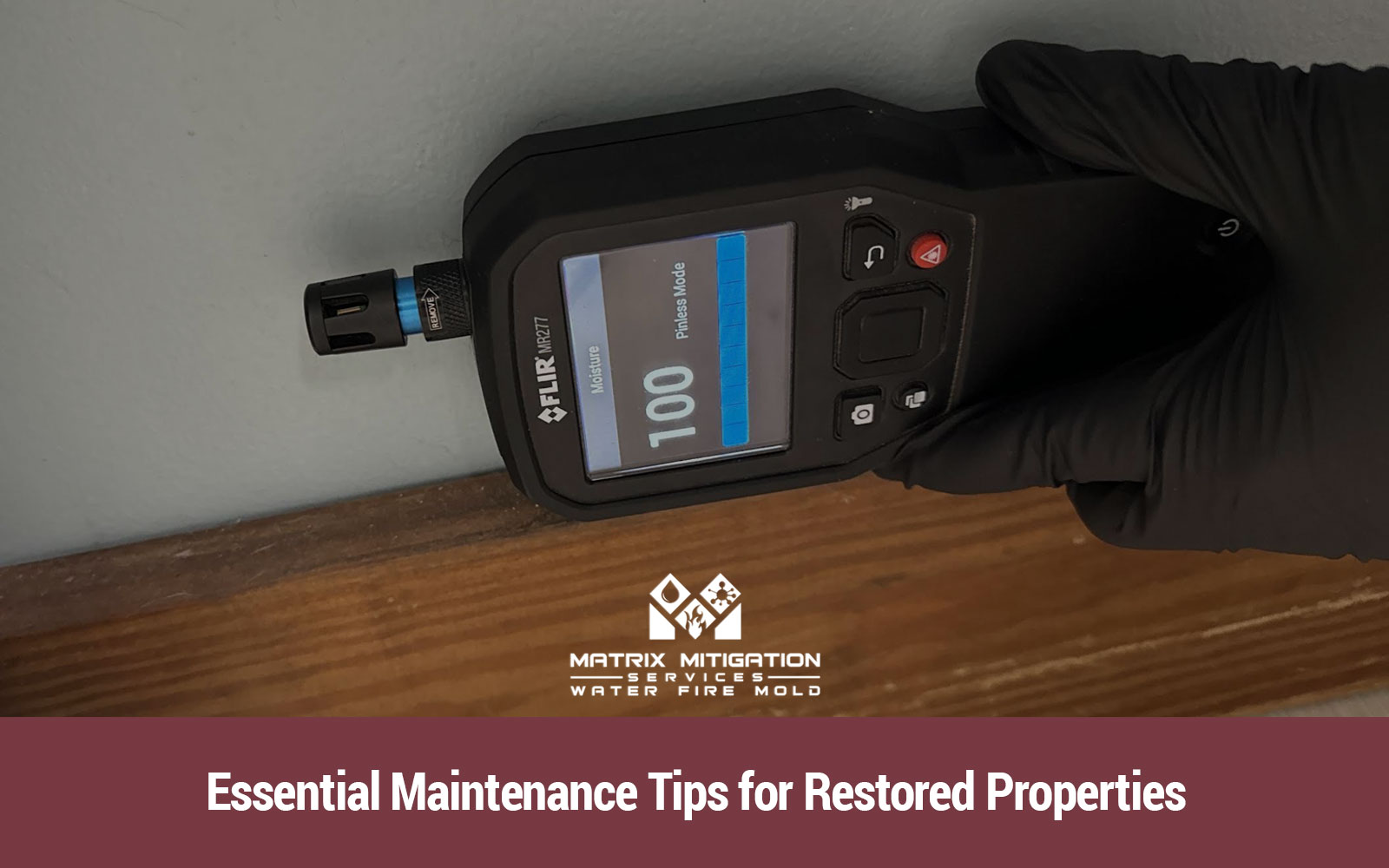Essential Maintenance Tips for Restored Properties in Northeast Georgia
After restoration work on your home — no matter the damage — it’s crucial to maintain your property to prevent future issues and ensure long-term durability. Here are a few tips to keep your Georgian home in pristine condition.

Regular Inspections are Key
Post-restoration inspections are critical for ensuring the longevity of repairs and spotting any new issues early.
Homeowners should look for damp spots, peeling paint, or mold growth as indicators of moisture issues. Look for water penetration around windows, doors, and rooflines for areas previously affected by water or storm damage. Regularly check roofs and gutters after storms to ensure they’re clear of debris like leaves and branches, which can block water flow and lead to leaks. Gutters shouldn’t sag or pull away from the house, this will inhibit proper function.
Preventive Measures for Moisture Control
The warm and humid climate of Northeast Georgia is a haven for mold and mildew. Managing indoor moisture by using a dehumidifier in moisture-prone areas like basements or laundry rooms can make a big difference. It’s important to keep air circulating throughout your home with good ventilation, which helps to lower humidity and freshen up the space.
Taking care of your HVAC system is essential for maintaining a comfortable and healthy indoor environment. Make sure it’s appropriately sized for your home and running efficiently. Regularly changing or cleaning the HVAC filters is not just about system maintenance—it’s about ensuring the air you breathe is clean, reducing moisture, and preventing mold buildup, making your home a healthier place to live.
Keeping up with home restoration will help prevent further issues and creates a safer home in the long-term. Homes in Northeast Georgia who have experienced a home restoration after an emergency should always aim follow strict maintenance to avoid additional issues.
Fire Safety Enhancements
For homes that have recovered from fire damage, it’s crucial to reinforce safety measures to minimize future risks. Enhancements to consider include:
Install Smoke Detectors: Place smoke detectors on every floor of your home, and test them monthly to ensure they are working correctly.
Upgrade to Fire-Resistant Materials: If you’re replacing any part of your home’s structure or interior, opt for fire-resistant materials to increase safety.
Accessible Fire Extinguishers: Keep at least one fire extinguisher accessible on each floor and ensure all family members are familiar with its use.
Maintaining Structural Integrity
Regularly checking the structural elements of your home is like giving it a health check-up. Once a year, take a walk around to inspect the foundation, framing, and exterior finishes. Keep an eye out for any cracks, warping, or other signs that might suggest settling or structural stress. While subtle, these can be important indicators of underlying issues.
Landscaping to Protect Your Property
While it’s no one’s favorite thing to do, proper landscaping can significantly impact your property’s ability to withstand storm and water damage. Ensure proper grading around the house for effective drainage, use native plants that resist soil erosion, and regularly trim trees to prevent limb damage during storms.
Stay Prepared and Proactive
Finally, keep an emergency preparedness kit updated and make a plan for quick action in case of future emergencies. Regularly review your property insurance to ensure it covers all types of potential damage, especially those common in your area, like storm or water damage.
By following these tips, homeowners in Northeast Georgia can not only maintain their restored properties but also enhance their resilience against future damage.
